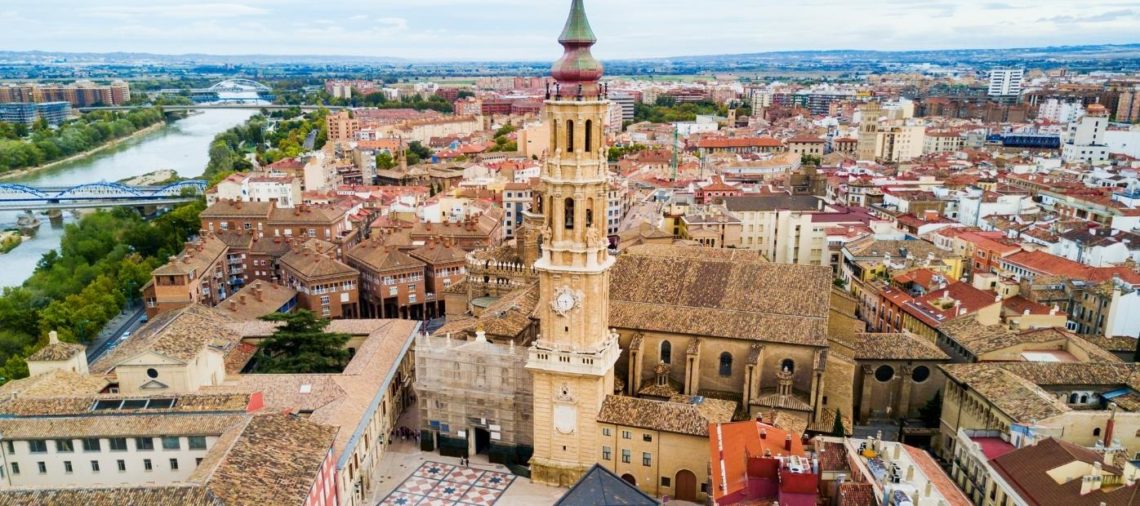Zaragoza is Spain’s fifth largest city by population (670,000) and the main city of Aragon, an autonomous community in the northeast of the country. At the same time, Zaragoza is a city with a vibrant history and with World Heritage sites, which automatically makes it one of Spain’s most beautiful travel destinations. Some places in Zaragoza are not to be missed, and we’ll tell you about them below as we go through this list of 10 of the most beautiful tourist attractions in Zaragoza, finding out the things to do in Zaragoza, Spain.
The central attraction of the old city is the Cathedral of Our Lady, El Pilar, built in Baroque style, with a wide range of decorations and stuccowork on the façade and decorated with jasper stone, bronze, various types of marble, and drawings by Francisco de Goya. Ancient legends say that it was in this cathedral that the miracle of the apparition of the Virgin Mary to St James the Apostle took place. But beyond El Pilar and the story of its pillar, here’s what to do and see in Zaragoza:
Planning a trip to Zaragoza, Spain? Here you find the best hotels in Zaragoza:
Find the best flights to Zaragoza, Spain:
- Best places to visit in Zaragoza
- Map with best places to see in Zaragoza, Spain (zoom in for details):
- The Old Town of Zaragoza
- El Pilar
- Plaza del Pilar
- Aljaferia Palace
- El Salvador Cathedral – La Seo
- Mercado Central
- Goya Museum
- Church of Santa Maria Magdalena
- Paseo de la Independencia
- Zaragoza River Aquarium
- In conclusion, Zaragoza is a beautiful Spanish city to visit
- Pin it!
Best places to visit in Zaragoza
Map with best places to see in Zaragoza, Spain (zoom in for details):
The Old Town of Zaragoza
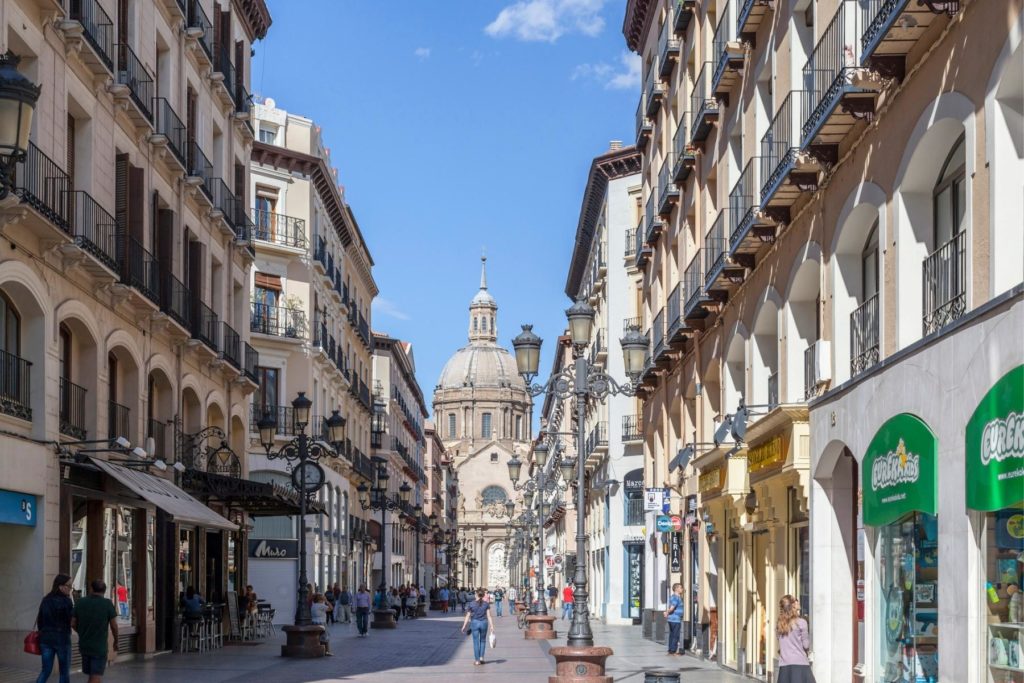
Zaragoza’s Old Town is basically where you start your exploration of the city and where you’ll find Roman remains, examples of Aragonese Mudejar architecture, and old medieval buildings. The route through the streets of the district can start behind the church of San Juan de Los Panetes to see the old Roman wall and the Torreón de la Zuda, the old tower of the Muslim fortress, and the current Tourist Office, where you can climb to the belvedere point for free.
You can then walk down Calle Alfonso I (bearing in mind that if you look back, you’ll have an excellent view of the Basilica del Pilar), until you reach the Plaza de San Felipe, surrounded by several Renaissance palaces and the church of San Felipe. Next stop is Plaza de España, home to the Palacio de la Diputación, the headquarters of the Banco de España and the Monumento a los Mártires, dedicated to those who lost their lives during the War of Independence.
From here, you can stroll along a stretch of Calle del Corso, one of Zaragoza’s oldest streets, then pass places like Plaza San Pedro Nolasco, where you’ll find the Caesaraugusta Theatre, La Magdalena church (notable for its Mudejar tower), the important Goya Museum (located on Calle Mayor) and the spectacular Palacio de la Real Maestranza de Caballería (Palace of the Royal Cavalry), built in Renaissance style.
A few meters from this palace are the 13th-century Arch and Casa del Deán, one of the best surviving examples from the medieval period, and the Plaza de Santa Marta, from where you’ll overlook the Torre de la Seo.
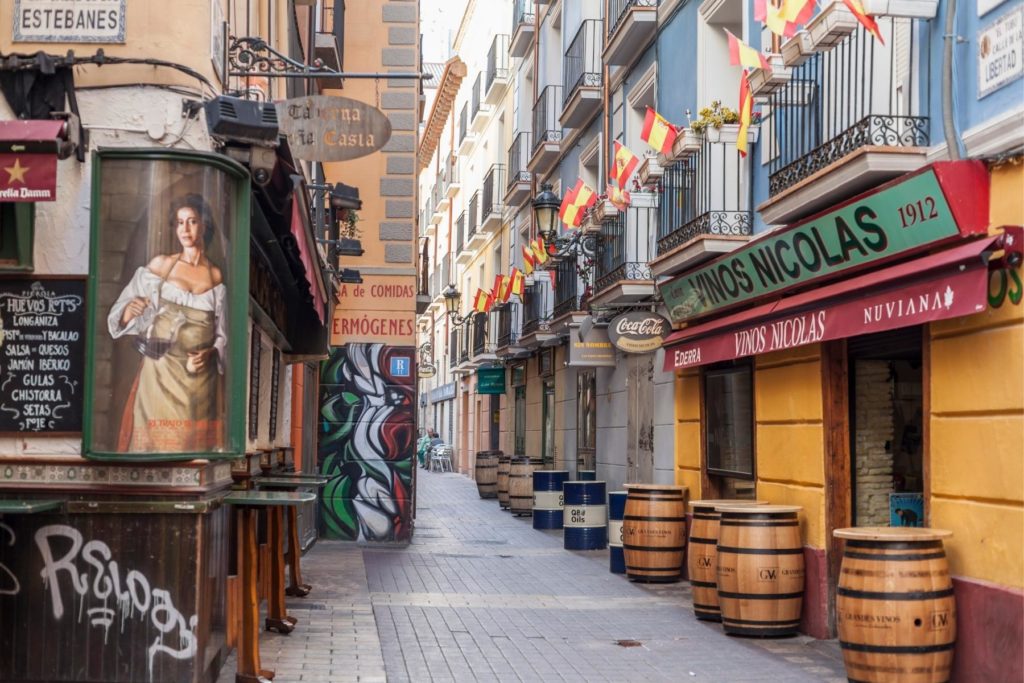
After this stroll, the ideal time to have lunch appears, and in the Old Centre, there are many restaurants near the main squares, Calle Mayor or Calle del Coso. You can choose to have a regular meal, sample typical dishes, or opt for the local custom of ‘going out for eating tapas’ in a classic tapas town like Zaragoza. Strolling around the areas near Plaza de Santa Marta and La Magdalena, San Miguel, and El Tubo will quickly make you understand why the locals enjoy this custom so much.
After a full day in the center, the best way to recharge your batteries is to visit some of the bars in the El Tubo neighborhood. This is an area of narrow streets full of bars and restaurants, where the custom is to go from one place to another, tasting each specialty, accompanied by a glass of wine or beer.
El Pilar
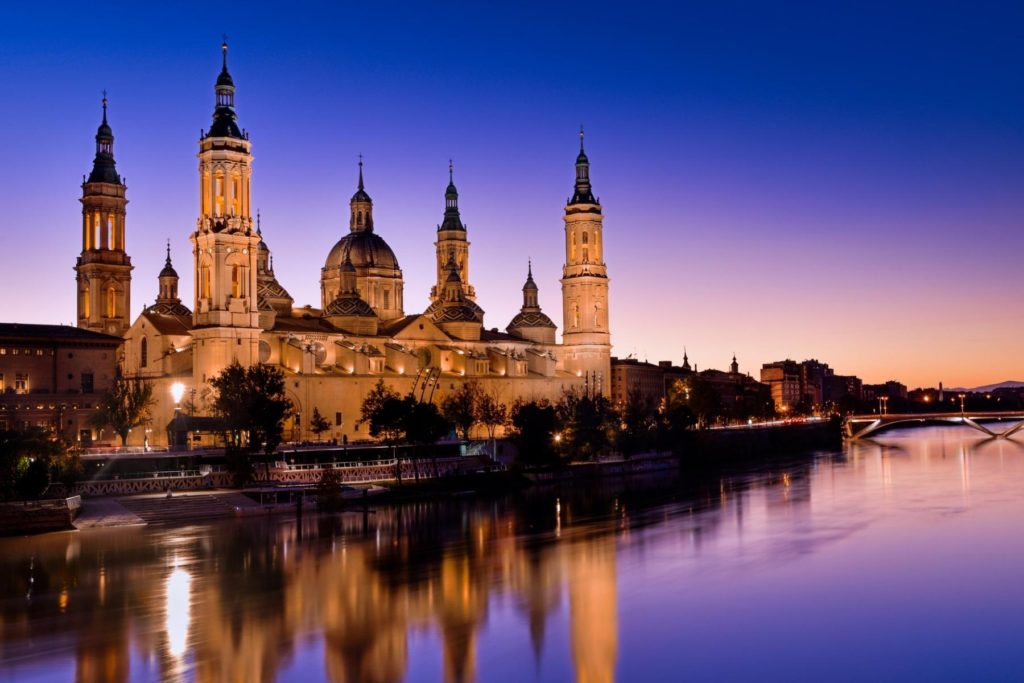
The Basilica del Pilar is one of the most important pilgrimage centers of the Catholic world and the most visited place in the Aragon region. According to an ancient legend, the basilica was built on the very spot where the Virgin Mary appeared to the Apostle James, preaching on the banks of the Ebro River. The first chapel dedicated to Mary was built around the column or ‘pillar’ on which the Virgin leaned. For two thousand years, this pillar symbolized the Christianisation of Spain, and the day on which it is celebrated, 12 October, is also considered Columbus Day.
The present basilica of El Pilar is the legacy of successive constructions that replaced the Gothic church of 1515, which in turn succeeded the Romanesque church destroyed by fire in 1443. From the burnt down Romanesque church and the demolished Moorish-Gothic church, some interesting works remain inside, such as the altar of Damián Forment and the splendid choir stalls.
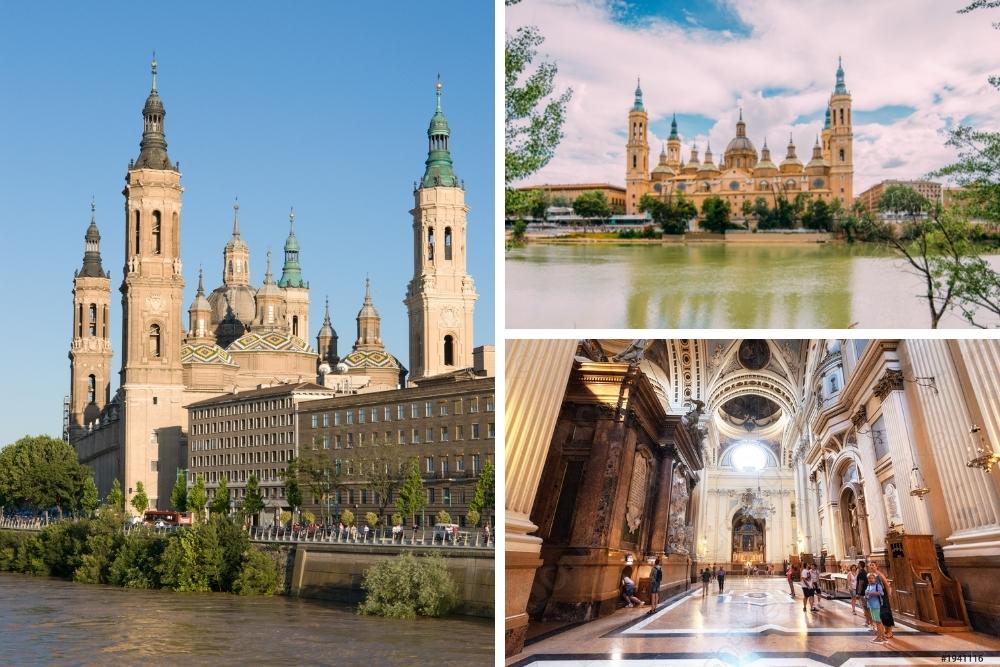
The present church was begun at the end of the 17th century and had enormous towers and domes. In 1718, the aisles were finished, and the main altar and choir from the previous churches were installed. Later, the architect Ventura Rodríguez was commissioned to build the Santa Capilla de la Virgen.
This is the real soul of the basilica, as the church layout is adapted to the idea of not moving the Sacred Column from its place under any circumstances.
As soon as you enter the basilica, you will have a sense of grandeur that dominates the place. In addition to the spaciousness and harmony of proportions, there is also the decorative richness of the church domes. Two of them, the Coreto and the Regina Martyrum, were painted by the brilliant Francisco Goya in his younger years.
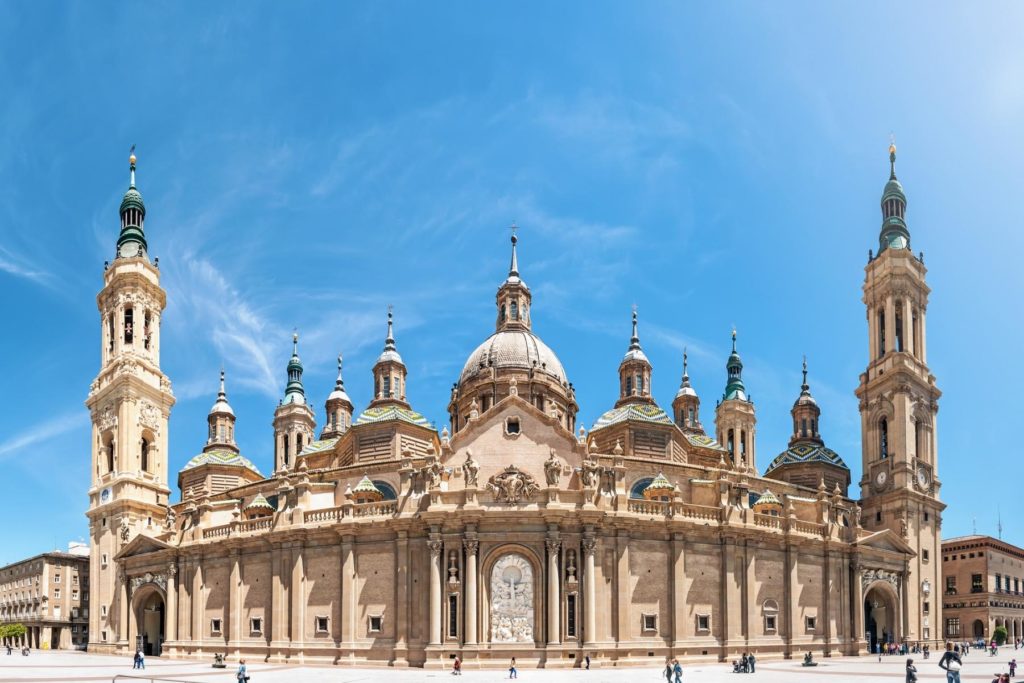
If you want to admire one of the most beautiful views in Zaragoza, don’t hesitate to climb to the vantage point of the Pilar Tower. A glass lift takes you up to 62 meters high in 20 seconds, where you’ll enjoy a spectacular panoramic view of the Ebro River and the historic center.
Inside the church is the Pilarista Museum. Among other things, here you can see a wonderful selection of mantles of the Virgin of Pilar, as well as various jewels given to her since the 16th century.
Address: Plaza del Pilar, Zaragoza
Plaza del Pilar
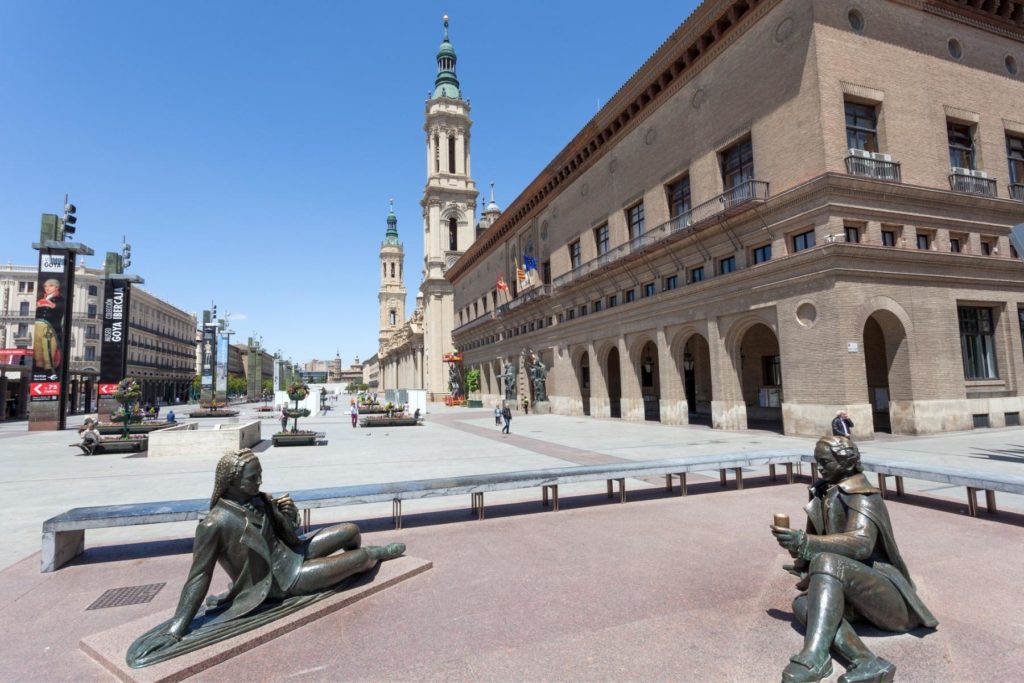
The Plaza de Nuestra Señora del Pilar at the foot of the basilica is an important meeting point for tourists and locals alike. This rectangular pedestrian square, one of the longest in Spain, is the perfect place to relax over a glass of beer or a coffee at one of its terraces and observe some of the historic buildings that border it, such as the church of San Juan de los Panetes, the Lonja and the Town Hall, the latter two in Renaissance style.
Among the most beautiful monuments in the square are the one dedicated to the painter Francisco de Goya, who spent part of his life in the city, the Ball of the World figure made in honour of the discovery of America, and the Fountain of Hispania, which shows a map of the Americas that can be seen very well from the top of the Tower of El Pilar.
Aljaferia Palace
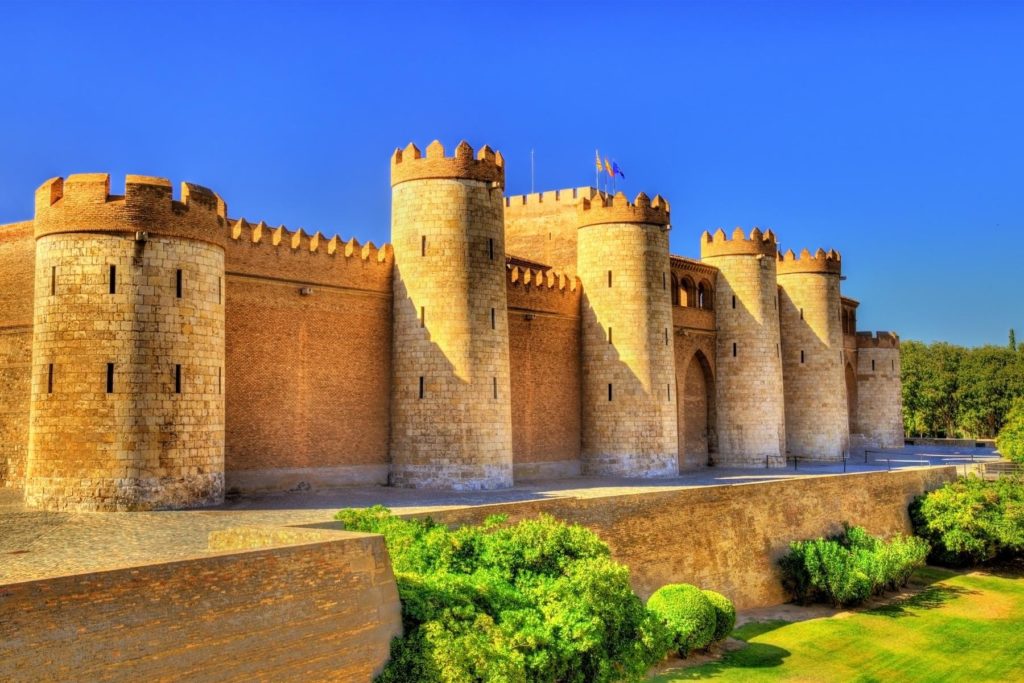
The Aljaferia Palace is one of the most important monuments of Spanish-Muslim architecture from the 11th century. The building has undergone successive alterations over the years. Today, you can stroll through its beautiful porticoes in the Patio de Santa Isabel, the Golden Hall and the Oratory.
The Mudejar Palace of Pedro IV and the Chapel of San Martin are the main elements that appeared after the Reconquest, at Aljaferia Palace. The Catholic kings made the most artistically important alteration in 1492. From 1485, the Aljaferia Palace was the seat of the Inquisition Tribunal, including the prisons and, from 1706, the barracks for the troops. Part of its outbuildings is now the seat of the Aragonese Parliament. The Tower of the Troubadours, which dates from the 9th century and in which Verdi set the action of his famous opera Il trovatore, is truly spectacular and must be visited.
Address: Calle de los Diputados, Zaragoza
El Salvador Cathedral – La Seo
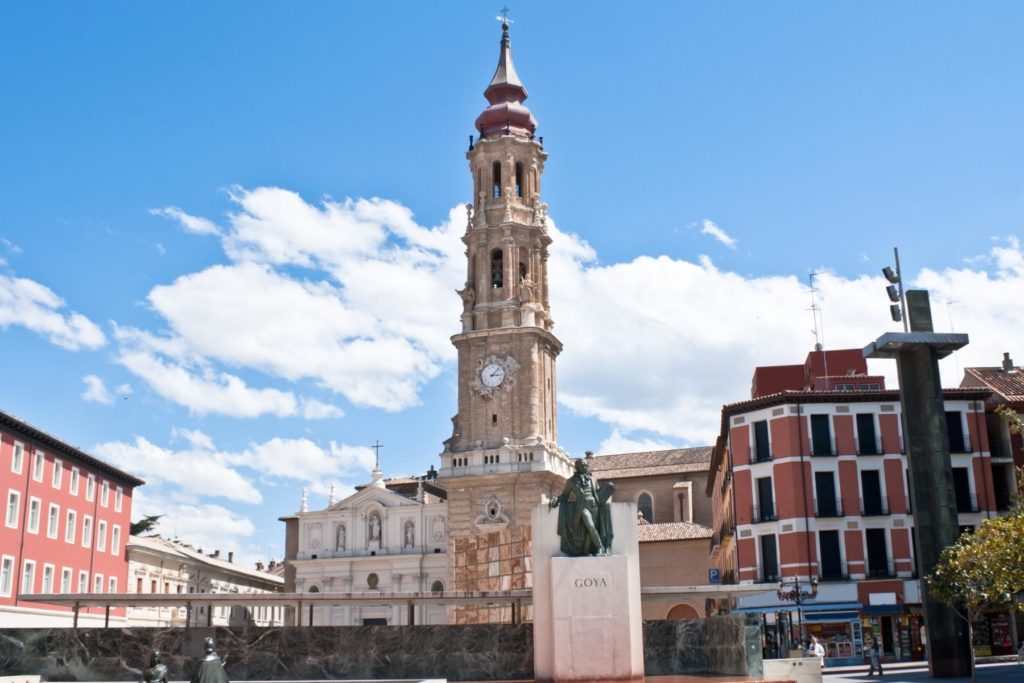
In the 13th century, the city of Zaragoza was an important commercial center and the birthplace of Mudéjar architecture. Since 2001, the Aljafería Palace, El Salvador Cathedral (La Seo), and the Church of San Pablo have been UNESCO World Heritage Sites for outstanding representatives of the Aragonese Mudéjar style.
The Aragonese Mudéjar style has unique characteristics that differentiate it from the Mudéjar style of other Spanish regions. In particular, it features octagonal rooms with thick walls, tiled and tiled floors, wooden ceilings, and more complex exterior decoration.
One of the best examples of Aragonese Mudéjar is the Cathedral of El Salvador (Cathedral of the Saviour), known as La Seo, the first Christian cathedral in Zaragoza. It was built in the 12th century on the site of the old Roman forum and the great Aljama mosque.
Over the centuries, this cathedral has undergone numerous renovations and extensions, which can be seen in various artistic styles on display. These range from the 12th-century Romanesque style of the apses to the 14th-century Aragonese Mudéjar style of the Parroquieta de San Miguel wall. The Baroque tower, designed by Giovanni Battista Contini, was completed in 1704 with a spire.
Inside La Seo, among the main highlights are the choir stalls and the majestic 15th-century polychrome alabaster altar, considered a masterpiece of late European Gothic. From the Renaissance period, other notable features include the retrochoir with its sanctuaries, and the alabaster carved Capilla de San Bernardo, depicting the Archangels and San Pedro Arbués. The cathedral also houses a museum of Flemish tapestry, with examples from the 14th-18th centuries, considered among the world’s top three collections. An important fact is that La Seo was declared a World Heritage Site by UNESCO.
Address: Plaza de la Seo 2
Mercado Central
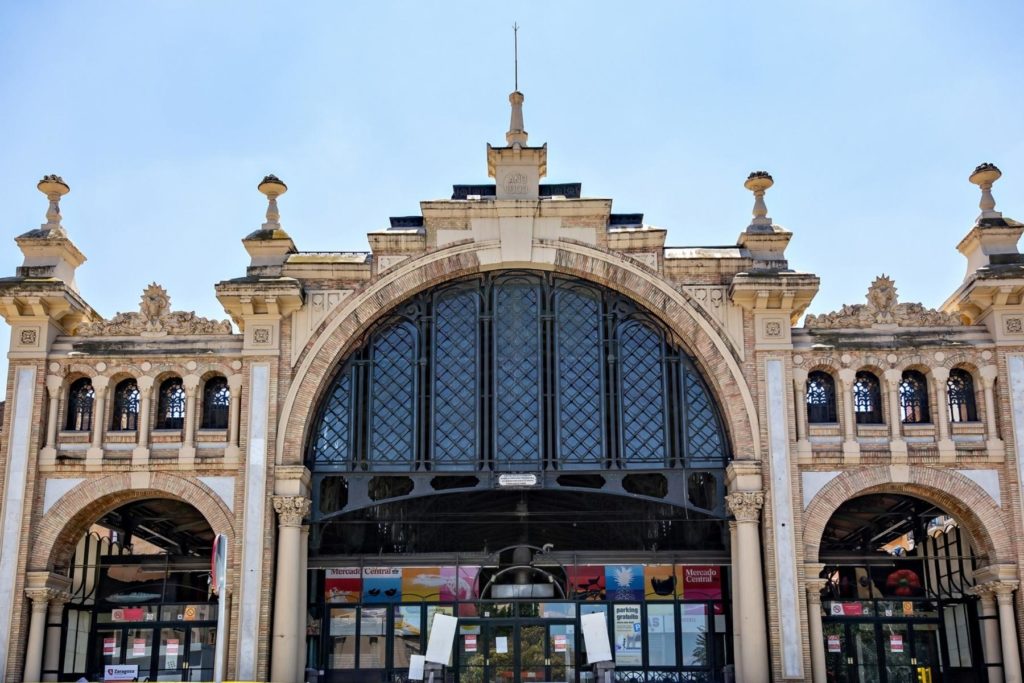
Zaragoza’s Central Market is an example of early 20th-century modernist construction in Spanish architecture. Félix Navarro, one of the finest architects the city has produced, reflected in this jewel the ideas he absorbed during his visit to the Universal Exhibition in Paris in 1889.
As a result, Zaragoza’s Central Market is one of the most beautiful and emblematic buildings in Zaragoza, an architectural and social symbol of the Aragonese capital with a history of over 800 years.
Rectangular in shape, with a basilica-like layout covering an area of 3,300 square meters, the decoration of the Central Market makes it a true “talking” monument, thanks to its use of the animal, plant, and mythological motifs. Above the main doors, for example, is the proud lion characteristic of Zaragoza, surrounded by vines and ears of corn. In turn, the capitals of the side arches of the entrance walls are represented by fruit baskets marked with a letter that makes up the name Zaragoza. There are also references to the god Mercury, with a repeated display of the classical caduceus (two serpents), the instrument and emblem of this patron saint of merchants.
The exterior of the Central Market of Zaragoza has two remarkable facades in modernist style with neoclassical accents, in which materials such as stone and brick were used, mixed with others more innovative at the time, such as iron and glass.
When you enter the Central Market building, you’ll be surprised by its beautiful and detailed structure, somewhat hidden from view until the renovation in 2020. Otherwise, Mercado Central is a classic market, where you’re greeted by the smell of fresh bread and charcuterie, offering a real insight into local life, as in any city market. Taste the fresh fruit, and don’t forget that, at night time, the building is beautifully illuminated, providing special snapshots for skilled photographers.
Address: Av. de César Augusto, 110
Goya Museum
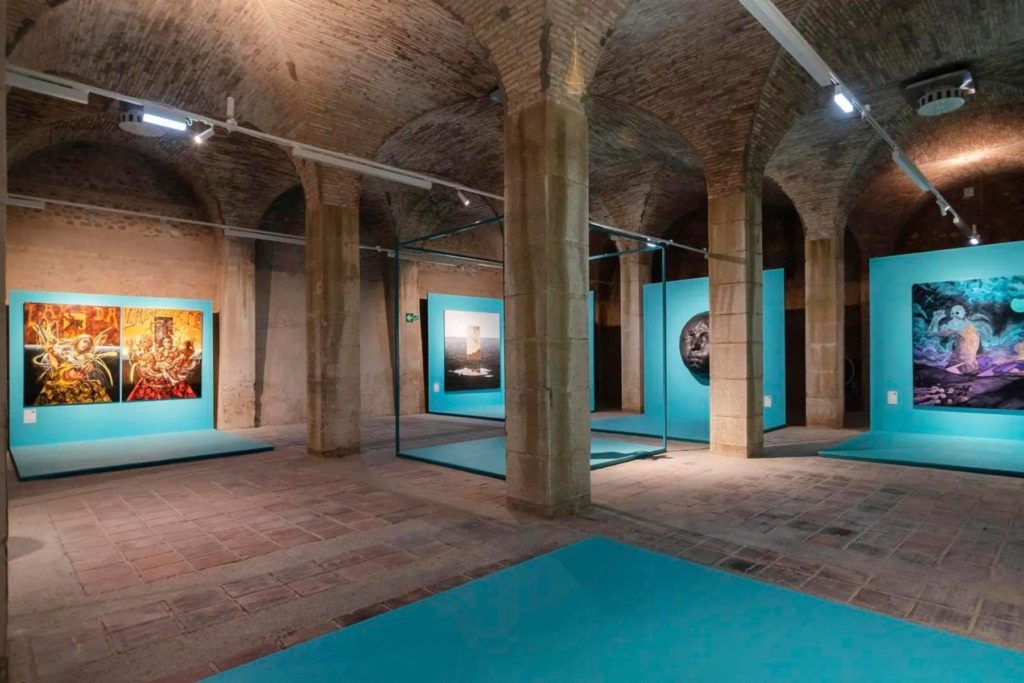
The Goya Museum is a must-visit for any art lover arriving in Zaragoza. Francisco de Goya (1746-1828) is one of the most important Spanish artists of the late 18th and early 19th centuries considered one of the last Old Masters and also one of the first modernist painters.
Zaragoza’s Goya Museum is housed in the Jerónimo Cósida house, a 16th-century Renaissance building near Pilar, which attracts attention with its spectacular façade and magnificent colonnaded courtyard.
With over 800 works on display, magnificent paintings and engravings by Goya and other famous Spanish artists, Renaissance and Baroque religious paintings, a collection of 18th and 19th-century art, drawings, and contemporary works, the museum is also an important center for cultural activities.
Address: C. de Espoz y Mina, 23
Church of Santa Maria Magdalena
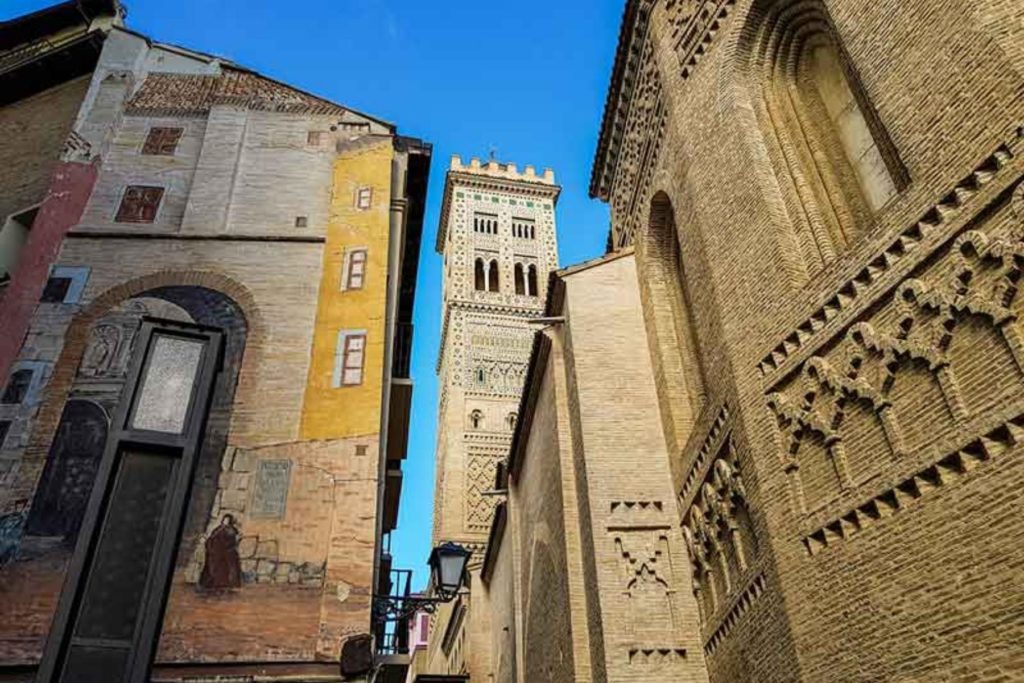
The Iglesia de Santa Maria Magdalena was built on an old Moorish mosque site. The original 12th-century Romanesque church (which replaced the mosque) was renovated in the 14th century and updated in the 17th century when they added Baroque details.
The most distinctive feature of the Church of Santa Maria Magdalena is the tower, characteristic of Aragonese Mudéjar architecture – the ornamental geometric patterns mimic an Almohad-style minaret. Decorative glazed ceramic motifs add elegance to the Moorish architectural appearance of the church.
The interior has a rare apse with overlapping arches and pointed windows, also typical of the Mudéjar style. The main altar is adorned with 18th-century carvings and images by Jose Ramirez de Arellano.
The church is open to the public, and guided tours are available, but you have to pay an entrance fee to visit.
Address: Plaza de la Magdalena, Zaragoza
Paseo de la Independencia
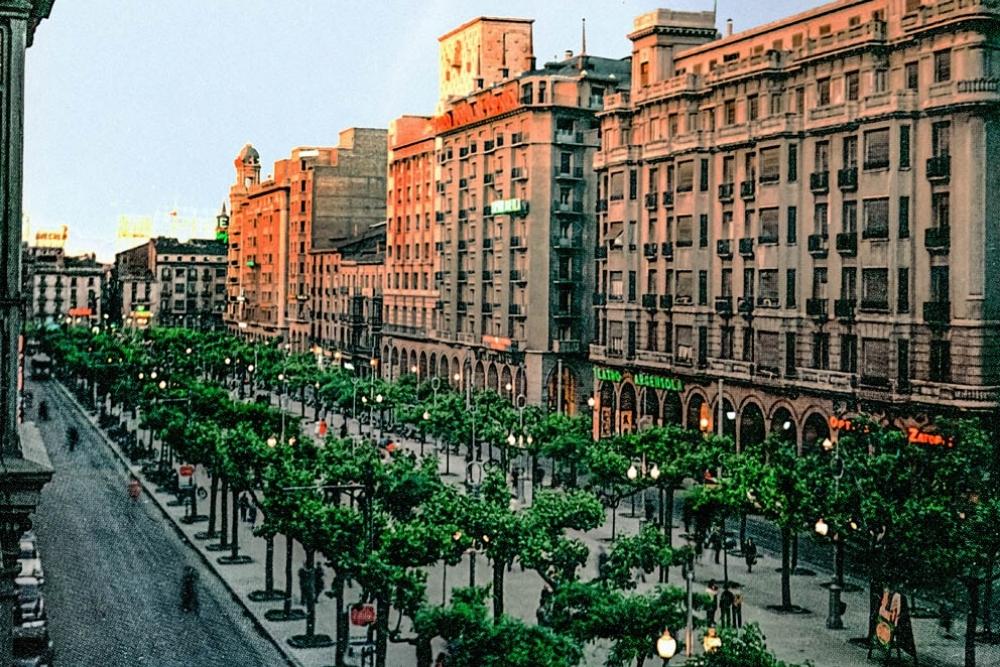
Visitors to a city usually like to set aside a few hours for shopping too. In Zaragoza, this relaxing (for some) activity can be done on Paseo de la Independencia, the city’s main shopping boulevard, where you’ll find a variety of international brands such as Zara and Massimo Dutti.
But even if you don’t plan to buy anything, a stroll down this boulevard is worth taking to admire the architecture of the buildings that define it. With a history of over 200 years and many renovations behind it, Paseo de la Independencia starts in Plaza de España and ends in Plaza de Paraíso, passing through Plaza de Aragón. Since its inception, chroniclers of the time have described it as “one of the liveliest streets of Zaragoza”, also generated by the presence of pharmacies, fashion houses, tailors, sweet shops, cafes, bars, boutiques, jewelry shops, etc.
Its status as the main commercial artery has made it the city’s first publicly lit street and the first cinema (in 1905). Today, if you want to get away from the hustle and bustle of the boulevard, just a few meters away is La Plaza de Los Sitios, a quiet retreat, a rectangular square with landscaped areas and a gorgeous garden with the Monument to the Sieges of Zaragoza at its center. Stop at one of the bars or restaurants flanking the square and order some food to recharge your batteries.
As for the sights on Paseo de la Independencia, the list wouldn’t be complete without visiting two interesting and beautiful churches: the Basilica de Santa Engracia (19th century), with its extraordinary Renaissance façade, and the church of San Miguel de Los Navarros, with its Mudejar architecture.
All in all, walking along the Paseo de la Independencia is to feel the heartbeat of a living city, stepping into places that speak of its history and the rich legacy left by the different cultures that have defined the city over the ages.
Zaragoza River Aquarium
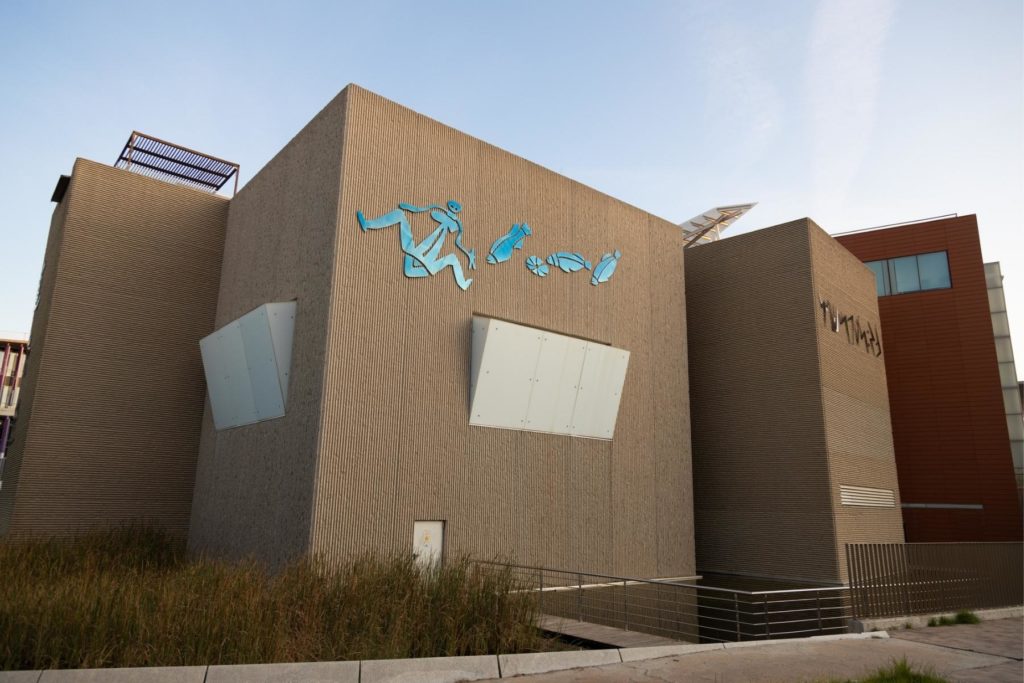
One of the best activities to do in Zaragoza when you’re on holiday with the kids, but one that will equally pique the interest of adults, is the Zaragoza Aquarium. This is the largest river aquarium in the Old Continent, and its 3,400 square meters display freshwater species from around the world.
The River Aquarium is located on the site of the 2008 Zaragoza International Exhibition, and in its halls and aquariums, you will discover aquatic animals from five of the world’s major rivers: Nile, Mekong, Amazon, Darling Murray (Australia), and Ebro (Spain – which runs through Zaragoza). The aim is to educate, research and disseminate through a rapid journey among the planet’s aquatic life. The aquarium offers multiple educational activities designed especially for the little ones: dramatized visits, educational workshops, trails for students, and the chance to spend a night or celebrate a little one’s birthday surrounded by fish. Among the species, children will learn about during the visit are sturgeons, anacondas, piranhas, otters, crocodiles, and even mammals that live out of the water but on riverbanks, such as titi monkeys.
Address: Av. de José Atarés
In conclusion, Zaragoza is a beautiful Spanish city to visit
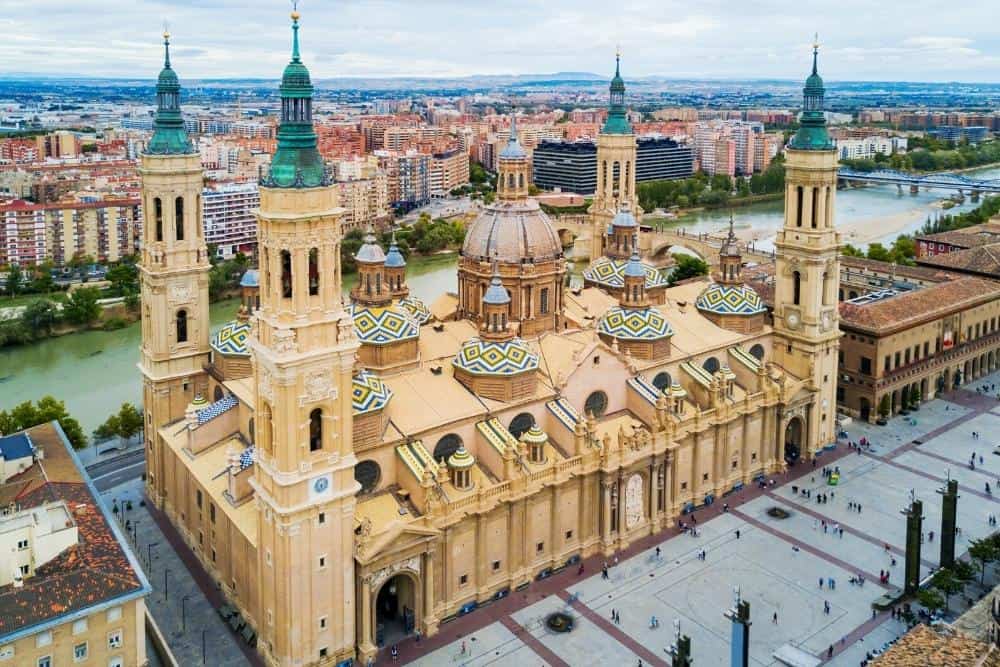
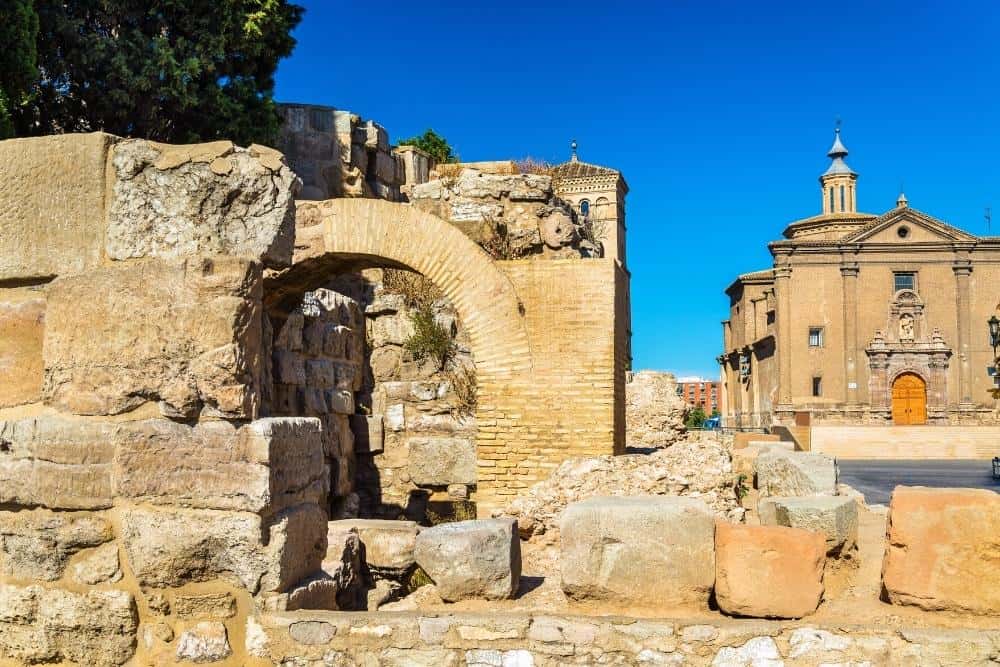
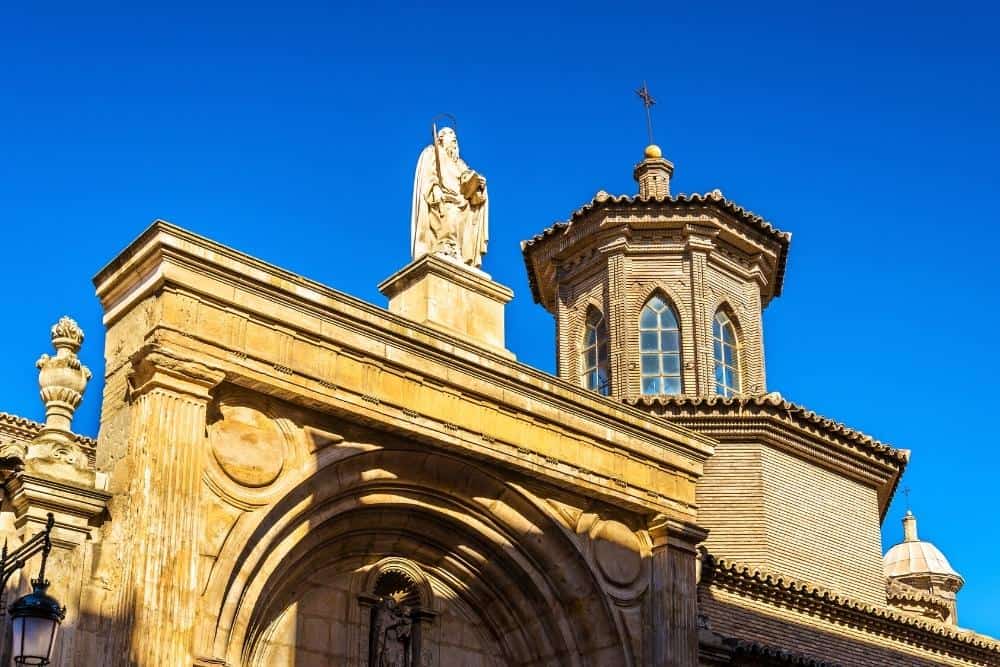
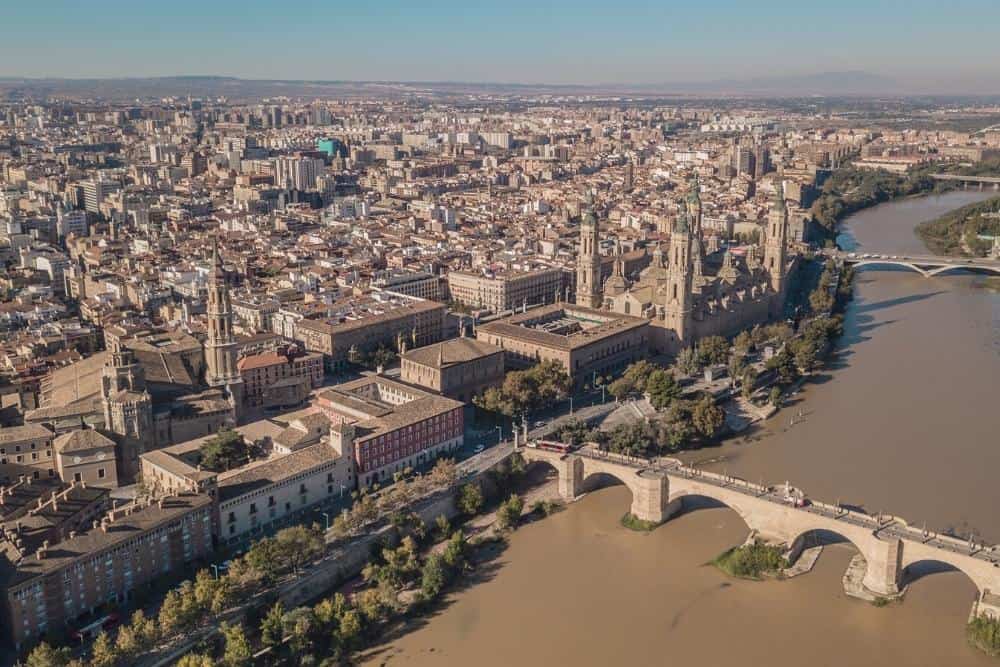
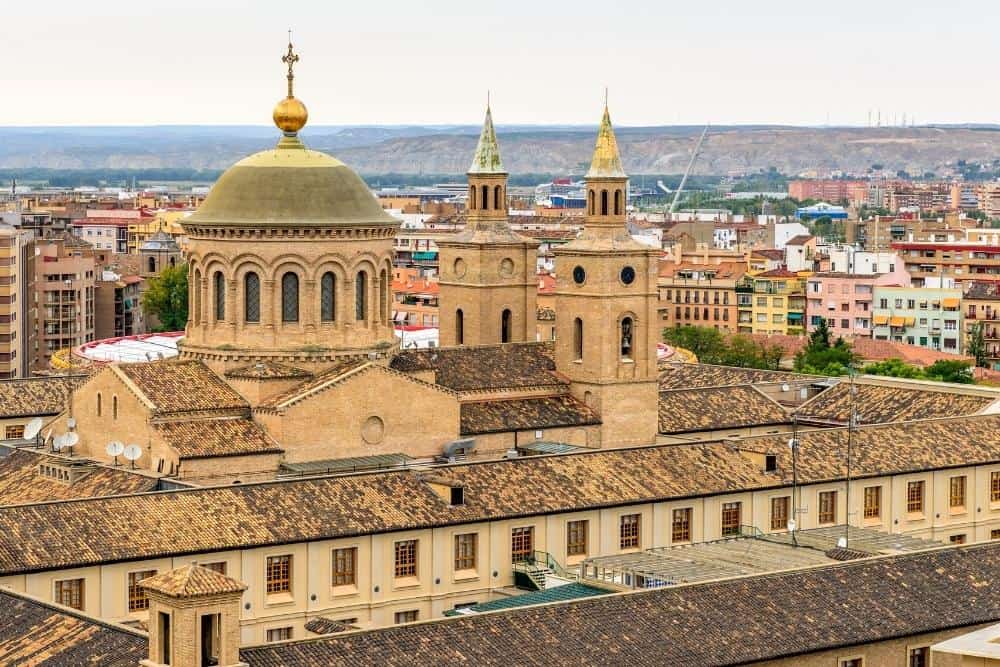
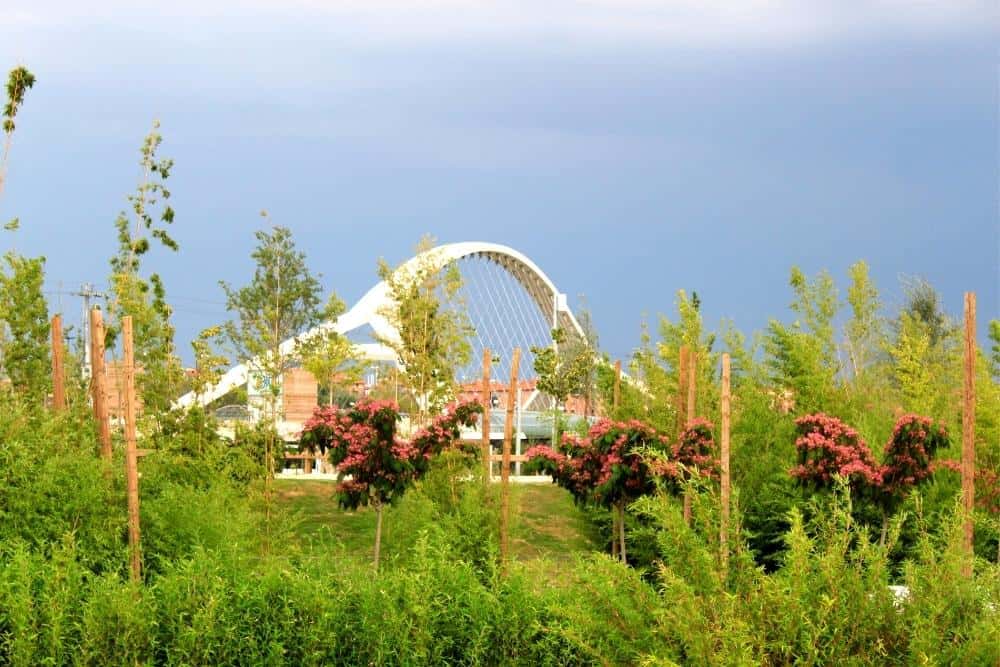
These are just 10 of Zaragoza’s tourist attractions, but the list could go on and on. For example, you can visit the Puente de Piedra (Stone Bridge), which crosses the Ebro River, linking the old and modern city, and the Caesaraugusta Public Baths Museum (part of the ancient Roman city here. In fact, visitors interested in ancient Roman history can follow the “Ruta Caesaraugusta” to discover the forum, the thermal baths and the theatre of the 1st-2nd century Roman city (named after Emperor Augustus) that flourished here), the Zaragoza Museum / Museo de Zaragoza, the Tapestry Museum, the Origami School Museum, the Basilica of Santa Engracia, the church of San Pablo de Zaragoza, Monasteria de Piedra etc. Zaragoza is a beautiful city with a great history, which should be included in the itinerary of any Iberian trip.
Pin it!
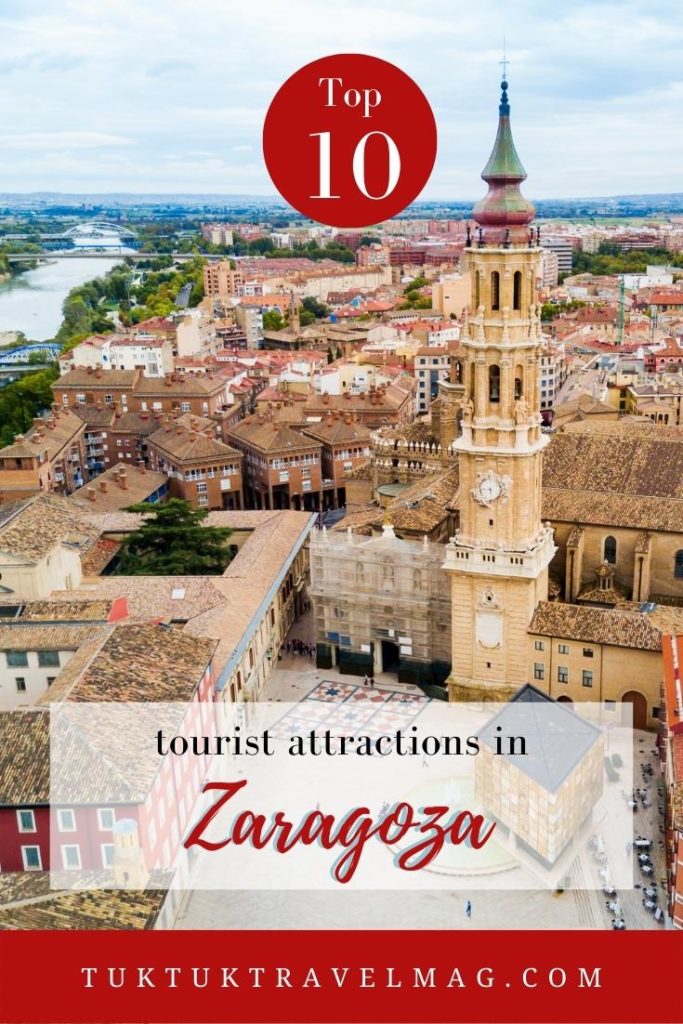
You may also like: The most beautiful beaches in Barcelona

